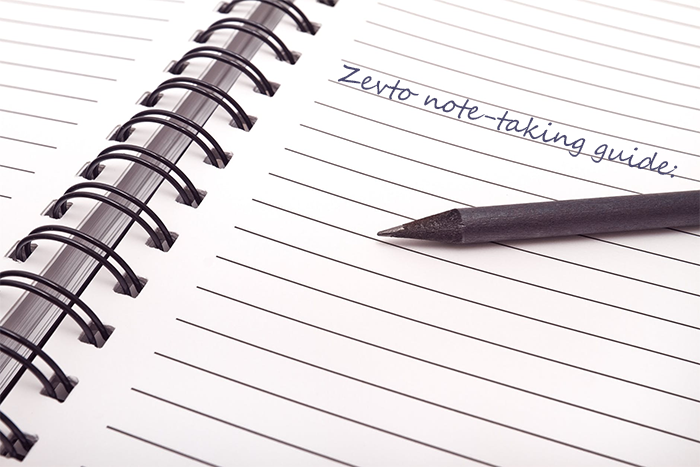By Marco Chase, Updated on Mon 23rd December 2019

Note-taking is essential for not only receiving but also comprehending information. There are multiple reasons why note taking benefits anyone taking in any form of knowledge. But the main benefit is the ability to recall an enormous amount of information that would be impossible to recall by heart. But there’s a technique to taking notes, it’s not as basic as just jotting everything you hear, it’s about summarising concepts in a brief but detail-rich format in your own words.
The outline method is using bullet points and spacing to provide a structure to your notes.
It usually works like this:
This is highly recommended if you have to make notes on the fly like a shopping list. It helps you note down the main items/ideas without all the fluff.
Cornell method is a more complex structure for note taking but very quick to do. You divide your page into 4 sections (1 optional) like in the picture below. The main section is used to make notes during the lecture, you write comments/questions next to the notes in the small side section. After you finish taking notes, summarise in the bottom short section. There is an optional title section, which would help u file notes better.
This method, like the outline method, should be used in quick situations where you don't have a second to spare but also have a lot of content to go through. Naturally, it's highly recommended for uni students or anyone who needs to make quick notes but on a lot of information.
The mapping method, better known as mind-mapping or spider diagrams, is when you visually create branches for notes to create sub categories. You start with the main topic in the middle and draw lines from it going outward, u then write subtopics/notes on the end of those lines.
This is highly recommended for people looking to create ideas or plan out a project. It is also good for when you are reviewing notes and want to link certain notes to each other in scannable format.
The charting method is simply using columns to organize data. The column represents a category and at the top of the column is the label for the category.
This is highly effective when you need to note down a lot of facts or points with a lot of categories. I can see history majors finding great use in this as it enables you to not only note down a lot of facts but emphasize relationships between similar facts
Skip the fluff. It does not and will not help you retain or note take in any shape or form.
Some of the benefits of using key phrases over full sentences:
This’ll help skip a lot fluff and jargon that you won’t understand later on. Also using your own words means it’ll be quicker and easier to revise over your notes later, resulting in more free time to relax.
You don’t have to do subheadings if the content you are making notes is not complex and deep; however it is imperative that you use headings and numbered lists.
Some of the benefits you get are:
By marking we mean: highlighting, underlining, embolden, etc. By doing this you can emphasize notes that important, making them not only easy to find when you look for them but also helps retention.
I know, I know. This sounds crazy, especially since I said throughout this whole article tips/methods to speed up making notes but there’s always a bad to every good. Particularly for making note taking faster, it is usually harder to retain/comprehend the notes you make.
Some methods above do help with this like the charter method or marking notes but when you write notes, you create a strong understanding of the hidden concepts behind the content. This is a lot harder to do when typing up notes as science has proven.